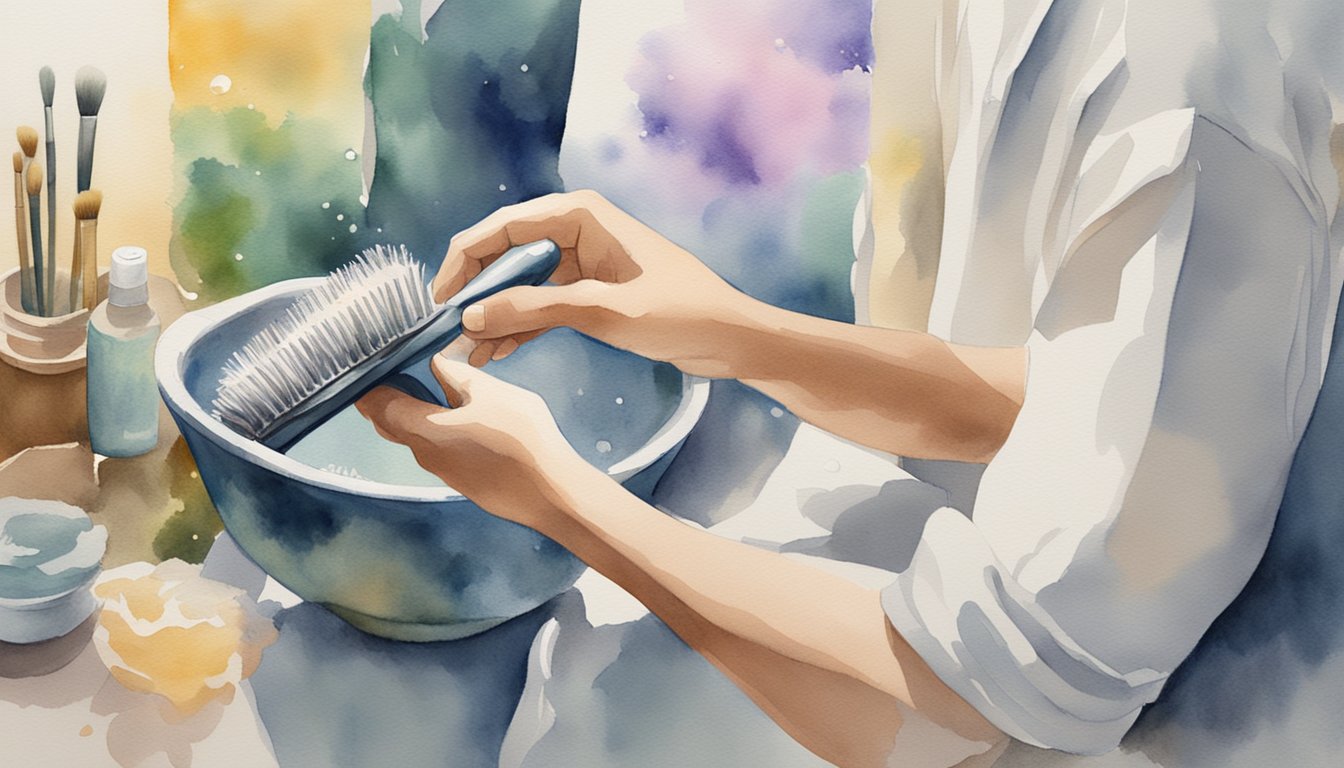Call us: (631) 270 9692
Cleaning a hairbrush may seem like a simple task, but it’s essential for maintaining healthy hair and scalp. Regularly cleaning your hairbrush helps remove hair, oil, dirt, and product buildup. This keeps your brush in good condition and prevents the transfer of bacteria back to your hair and scalp.
We need just a few items for an effective clean: a comb, some shampoo, and warm water. For wooden-handled brushes, be cautious with water to avoid damage. Soak the bristles for about ten minutes, then use your hands to work through the bristles, ensuring all debris is removed.
Not only does this process refresh your brush, but it also extends its lifespan. Keeping our tools clean makes a noticeable difference in the overall health of our hair. For more detailed steps and methods, you can refer to this guide on Healthline.
Understanding Hairbrush Types
Choosing the right method to clean a hairbrush depends on the type of brush you have. Different materials and designs impact how easy or hard it is to clean your hairbrush effectively.
Materials and Designs
Hairbrushes come in various materials like wood, plastic, and bristle types—both natural and synthetic. A wooden brush often features natural bristles and can be more delicate, requiring gentle cleaning methods to avoid damage.
Plastic brushes, on the other hand, are usually more robust and can withstand stronger cleaning agents. Round brushes are great for adding volume but can trap hair and debris easily, making them slightly harder to clean. Paddle brushes have wide, flat surfaces, making them somewhat straightforward to tidy up but may require more scrubbing if the build-up is substantial.
The Impact on Cleaning Methods
The type of brush and its material significantly affect the cleaning method we should use. For a wooden brush, we recommend avoiding soaking it in water to prevent wood damage. Instead, we should wipe it down with a damp cloth and mild soap.
Plastic brushes can be soaked in soapy water without any risk. Adding a few drops of gentle shampoo or baking soda can help remove stubborn grime. For natural bristles, it’s best to use mild shampoo and rinse thoroughly, as strong cleaners can degrade the bristles. Synthetic bristles are easier to clean and can handle more aggressive scrubbing.
Step-by-Step Cleaning Guide
Cleaning a hairbrush properly involves a few key steps: removing hair and lint, preparing a cleaning solution, scrubbing and rinsing, followed by drying and sanitizing the brush for future use.
Removing Hair and Lint
To start, we need to remove the hair and lint from the bristles. Begin with a comb to loosen larger chunks of hair. Pull the hair from the brush using your fingers. For stubborn hair, we can use scissors to cut through the tangled mess. Aim to remove as much hair and lint as possible before moving to the next step. This ensures that the cleaning solution can effectively reach all parts of the brush.
Preparing the Cleaning Solution
Next, let’s prepare the cleaning solution. Fill a bowl with warm water and add a few drops of gentle soap. For extra cleaning power, we can add 1 to 2 teaspoons of baking soda. This helps to break down oil and product residue. Another option is to add a small amount of vinegar, which aids in removing bacteria and dead skin cells from the brush. Mix the solution until it forms suds.
Scrubbing and Rinsing
With the solution ready, it’s time to scrub. Dip the brush into the soapy water and use a toothbrush to scrub between the bristles and at the base of the brush. This helps to dislodge grime and residue. Pay attention to areas that have built up product residue. For plastic brushes, we can soak them in the solution for 10 minutes to ensure a deep clean. Rinse the brush thoroughly under running water to remove soap and loosened residue.
Drying and Sanitizing
Finally, we need to dry and sanitize the brush. Shake off excess water and place the brush bristle side down on a towel. Allow it to air-dry overnight. In humid climates, it might take longer. To sanitize, use a cotton swab dipped in alcohol to clean the base of the bristles and brush handle. This step helps kill any remaining bacteria and keeps the brush hygienic. Regularly sanitizing the brush will keep it in good condition, preventing damage over time.
Maintenance and Replacement

Maintaining a clean hairbrush and knowing when to replace it helps ensure our hair is properly cared for. Proper routine care and recognizing signs of wear keep our brushes in top condition.
Routine Care Tips
Regular cleaning is essential to prolong the life of our hairbrushes. After each use, remove hair strands stuck between the bristles to prevent buildup. Depending on your hair type and the products you use, deep cleaning should be done weekly or bi-weekly.
To deep clean, soak plastic brushes in warm water mixed with a few drops of gentle shampoo or a bit of baking soda. For wood-handled or natural bristle brushes, avoid soaking. Instead, dip the bristles in soapy water and use a cloth for the handle. Always rinse thoroughly and let air dry completely before use to prevent mildew and bacteria growth.
Signs You Need a New Hairbrush
A dirty brush with bristles missing or bent won’t effectively clean your hair. If you notice your brush has a persistent odor that doesn’t go away after washing, it’s time for a replacement. Also, inspect the base and bristles for splitting or fraying. These signs indicate the brush no longer provides the proper support for your scalp and hair.
We should also consider the handle’s condition. Wooden handles that are cracked or splintering can cause damage to our hair. Rubber bases that have lost their elasticity won’t hold bristles properly and can cause hair to snag. For optimal hair care, replace your hairbrush every 6-12 months, depending on usage and condition.





